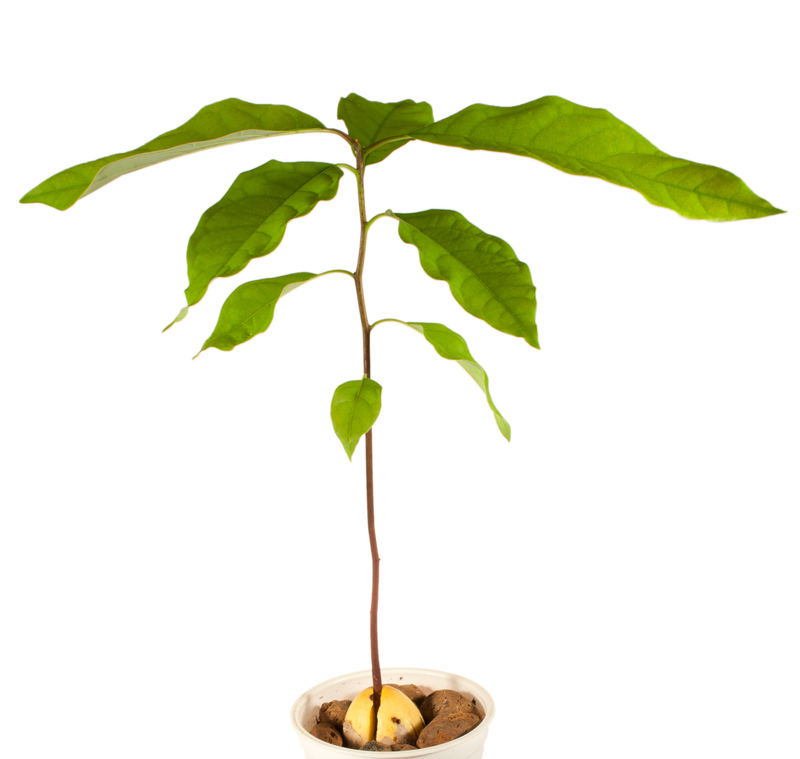Urban Gardening Redefined: 3 Tips for Designing a Moveable Garden
Urban gardening is no longer simply a trend--it's a necessity for modern, eco-conscious city dwellers craving fresh produce and green sanctuaries in the midst of steel and glass. But what if your living space is limited by strict landlord rules, frequent relocations, or weather conditions? Enter the innovative concept of the moveable urban garden. In this article, we'll reveal how you can transform your balcony, rooftop, or tiny apartment patio into a versatile, portable oasis. Discover three expert tips on how to redefine urban gardening for the 21st century and design your very own mobile garden that goes wherever you do.
What Is a Moveable Garden?
A moveable garden is an adaptive approach to urban gardening where your plants and gardening infrastructure are designed to be portable, flexible, and resilient. Whether you're a renter, frequent mover, or someone who values flexibility, portable urban gardens let you carry a slice of nature with you, adapt to seasonal changes, or reconfigure your layout as your lifestyle evolves.
Moveable gardens diversify the advantages of urban gardening by maximizing limited spaces and sidestepping permanent modifications. Ideal for balconies, patios, rooftops, window sills, and even interiors, these flexible gardens allow urbanites to enjoy the beauty and utility of growing their own food or ornamental plants within a compact and ever-changing cityscape.

Benefits of Portable Urban Garden Design
- Flexibility: Reshape your garden layout according to sunlight, weather, or seasonal changes.
- Versatility: Grow edible and decorative plants even in compact, rental, or communal spaces.
- Mobility: Easily relocate your garden when you move apartments, rearrange furniture, or host gatherings.
- Protection: Shield delicate plants from harsh weather by moving them to safer spots.
- Creativity: Express a unique design aesthetic through modular, repurposed, or upcycled containers.
3 Essential Tips for Designing a Moveable Urban Garden
Ready to embark on your urban gardening journey? Here are three game-changing tips for reimagining your garden into a dynamic, moveable masterpiece. Each tip blends practical advice with creative inspiration, ensuring your city garden is both functional and beautiful.
1. Embrace Lightweight, Modular Containers
The foundation of any portable urban garden is its container system. Traditional clay pots and heavy planters are often impractical for small or frequently shifting spaces. Instead, opt for an array of modular, lightweight containers that are easy to lift, reorganize, and transport.
- Material matters: Choose containers made from recycled plastic, resin, fabric grow bags, or even upcycled materials such as wooden crates or buckets. Not only are they lighter, but many offer improved drainage and insulation for plant roots.
- Think in modules: Modular containers allow for easy stacking, grouping, or splitting up to fit available space. Moveable vertical garden panels, stackable self-watering planters, and hydroponic buckets all work brilliantly for city gardeners.
- Add wheels or handles: Attach caster wheels or sturdy handles to heavier containers for rapid relocation. This is useful for chasing sunlight, sheltering from storms, or redesigning your outdoor nook for a gathering.
Pro Tip: Consider assembling a collection of varying container sizes so you can grow everything from herbs and greens to small fruits and flowers. Mixing heights, colors, and textures adds visual interest while maximizing your growing area.
2. Maximize Your Microclimate & Mobility
Unlike permanent gardens in backyards, moveable gardens grant the luxury of adapting to microclimates--those subtle differences in temperature, humidity, and sunlight that exist around your apartment or building. Skilled urban gardeners use this flexibility to nurture thriving plants, even without ideal exposure.
- Track the sun and wind: Spend a few days observing which corners of your balcony or rooftop get the best sunlight, and identify areas sheltered from high winds or urban pollution. Position leafy greens in partial shade, while sun-loving tomatoes or peppers can take center stage in sunniest spots.
- Move with the seasons: During harsh summers or freezing winters, roll your planters indoors or into sheltered areas to protect vulnerable species. Some greenhouses and cold frames are even designed to be portable.
- Experiment and adapt: One of the joys of flexible gardening is constant experimentation. If a plant is languishing, simply move its container to another spot. The ability to quickly "rehome" your plants is a secret weapon for maintaining urban garden health.
Pro Tip: Keep an urban gardening diary or use a plant care app to track where and how your plants thrive best. Over time, this knowledge will help you make informed decisions on optimizing your portable layout.
3. Curate a Smart Selection of Plants for Portability
Not every plant is well-suited to the dynamic life of a moveable city garden. Some require deep root systems or stable, permanent locations. Smart plant selection is crucial for portable success and long-term enjoyment.
- Choose compact, container-friendly species: Herbs (like basil, parsley, chives), leafy greens (lettuce, arugula, kale), cherry tomatoes, strawberries, and dwarf citrus trees all flourish in small, portable conditions.
- Prioritize resilience: Opt for varieties that can tolerate the occasional disruption, changes in light, or brief periods of dryness. Succulents, certain annual flowers, and many kitchen herbs are particularly suited for portable gardening.
- Mingle edible and ornamental: Boost both aesthetics and productivity by growing a mix of vegetables, herbs, and flowers. Nasturtiums, pansies, and marigolds add color and double as edible garnishes.
- Plan for succession: In limited urban gardening space, keep new seedlings ready to replace harvested or faded plants. Quick-growers like radishes or microgreens are particularly effective for this approach.
Pro Tip: Many garden stores now offer "patio" or "urban" editions of classic varieties bred for small pots and containers, so ask your local nursery for recommendations specifically tailored to city gardening.
Bonus: Tips for Urban Garden Sustainability and Tech Integration
While designing a mobile garden, why not embrace eco-friendly practices and modern technology to make your urban oasis even greener? Here are a few extra ways to elevate your urban gardening experience:
- Water wisely: Use self-watering planters or drip irrigation systems designed for containers. They reduce maintenance while preventing overwatering in limited spaces.
- Compost on the go: Mini bokashi bins or worm composters fit neatly into small apartments and generate nutrient-rich fertilizer for your mobile pots.
- Smart gardening gadgets: Invest in affordable soil moisture or light sensors, or try plant-care apps for reminders on watering and fertilizing. These tools are invaluable for busy urbanites juggling work, travel, and gardening.
- Opt for organic and pollinator-friendly plants: Prioritize chemical-free soil and seeds, and add a few nectar-rich flowers to attract urban bees and butterflies.
Moveable Urban Gardens: Ideas and Inspiration
Your moveable garden is limited only by your imagination. Here are some creative ideas to spark inspiration for city dwellers seeking to explore innovative urban gardening techniques:
- Pallet gardens: Upcycle wooden pallets into vertical planters that rest against walls or balconies. Easily move them to new locations as light or space needs change.
- Hanging gardens: Use hanging pots, pocket planters, or macrame holders that can be moved according to sunlight and season.
- Rolling raised beds: Build short raised beds on casters for larger crops or small shrubs. These can be wheeled indoors or out, or repositioned to suit changing layouts.
- Portable trellises: Grow climbing beans, peas, or even compact cucumbers on lightweight, freestanding trellises that double as privacy screens and garden decor.
- Suitcase seedlings: Repurpose old luggage or trunks as quirky planters--just drill drainage holes and line well.
- DIY herb carts: Convert a utility cart into a rolling herb garden, perfect for kitchens, patios, and balconies.

Common Challenges and How to Overcome Them
Moveable urban gardening is not without its complications. Here are solutions to the top three hurdles faced by urban growers:
- Weight limits: Many balconies and rooftops have load restrictions. Always check the structural limits before adding heavy containers. Choose lightweight soils and avoid overwatering to reduce weight.
- Water drainage: Insufficient drainage can lead to root rot in containers. Ensure each garden vessel has drainage holes and use saucers to catch overflow without damaging floors.
- Exposure to elements: Wind tunnels and excessive sun are common in urban spaces. Use portable screens, shade cloths, or mobile windbreaks to protect delicate plants.
Conclusion: Urban Gardening, Liberated
Redefining urban gardening means breaking free from old constraints and seizing the power of flexibility, creativity, and sustainability. Designing a moveable urban garden gives you the freedom to customize your green haven, no matter where city life takes you. From choosing the right modular containers and curating portable plant selections to leveraging microclimates and smart technology, today's urban gardens are more approachable and accessible than ever before.
Whether you're a seasoned gardener adjusting to apartment life or a green-thumbed beginner with a passion for sustainability, a portable urban garden offers the ideal solution for maximizing greenery and well-being within a compact, ever-shifting cityscape.
Start small, dream big, and let your urban garden grow with you--anytime, anywhere.